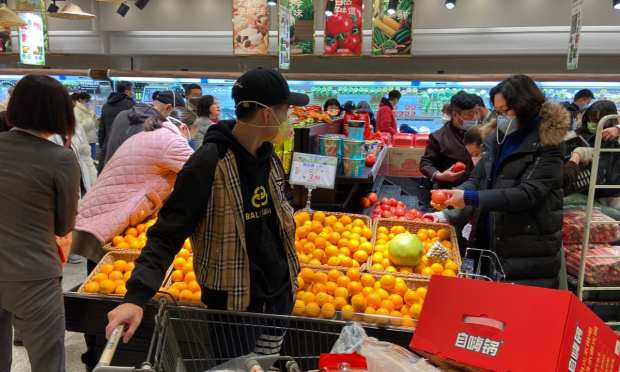China Extends Economic Stimulus Measures For Small And Micro-Businesses

China’s State Council announced late Tuesday that small and micro-sized businesses can defer loan payments past first quarter 2021 as needed, according to CNBC.
Certain banks catering to small businesses will also continue to receive government support in the wake of a massive shutdown earlier this year due to the COVID-19 pandemic.
“Right now the economy is gradually returning to normal, but more support is still needed (given) small and micro-sized enterprises’ production and operations face unique challenges,” the government statement said, according to CNBC’s translation of the text.
Experts told CNBC that the fact that the Chinese government was keeping such measures in place indicates their economy has still not recovered from the lockdowns earlier this year, which caused the China’s GDP to shrink by 6.8% in the first quarter.
China’s economy returned to growth in the second quarter and is now the only leading economy to show significant growth in 2020, with GDP growing 0.7% so far this year.
Liu Xiangdong, a deputy director of the China Center for International Economic Exchanges in Beijing, told CNBC that China has not seen large-scale bankruptcies of small businesses.
“But for small, medium and micro-sized enterprises, uncertainties still exist. If the economy takes a turn, they won’t be able to hold up,” Liu added, according to a CNBC translation.
Earlier this month, China was forecast to be the first major economy to recover from the global pandemic recession, with Europe lagging behind, according to the Organization for Economic Cooperation and Development (OECD).
China is expected to see its gross domestic product grow 9.7 percent in 2021’s fourth quarter compared to Q4 2019, according to OECD figures quoted by The Wall Street Journal in early December.
The Asian economic powerhouse is expected to be followed by South Korea at 1.6 percent growth between Q4 2019 and Q4 2021, followed by Indonesia (1.5 percent growth during the period), then Turkey (0.4 percent), Russia (0.2 percent) and the United States (0.1 percent).
China said in October it had the COVID-19 pandemic under control and will see its economy boosted by around 2 percent, according to Reuters.
In September, the Chinese National Bureau of Statistics announced that August retail sales rose for the first time this year by 0.5 percent from 2019, while industrial production expanded 5.6 percent against a forecast of 5.1 percent. That’s stacked up against the first eight months of the year when retail sales slid 8.6 percent and industrial production advanced 0.4 percent. Industrial production is often seen as a sign of the beginnings of consumer demand.
“The data show the world’s second-largest economy in recovery from the first-quarter slump, in stark contrast to nations still struggling with virus outbreaks, lockdowns and economic contraction,” Bloomberg reported at the time. “In China, fiscal stimulus and surprisingly strong exports first boosted industrial output. Now, the return to growth in retail spending shows private demand is also starting to claw back losses earlier in the year.”
